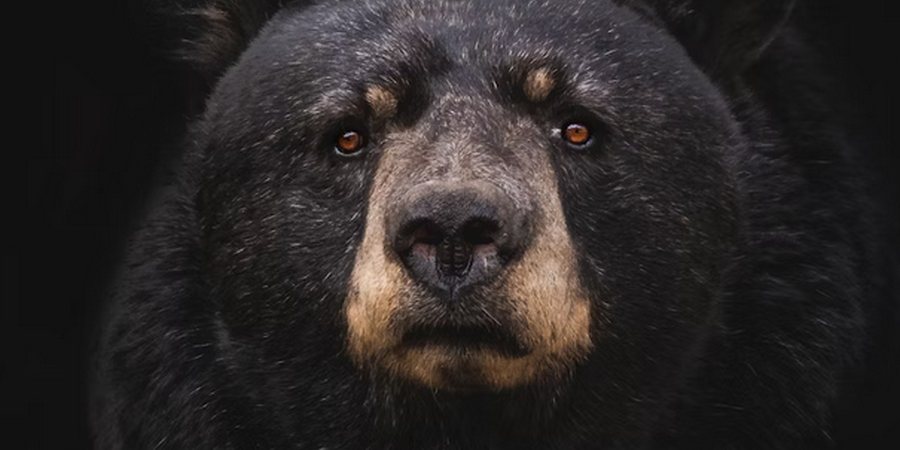NEW JERSEY - Once on the brink of disappearing from New Jersey entirely, black bears have staged a remarkable comeback. Their growing numbers – and expanding range into areas like Sussex, Passaic, Warren, and Morris counties – have sparked both excitement and concern.
New Jersey's Black Bear Comeback: A Growing Population Brings Challenges and Need for Coexistence
Once a rare sight in the Garden State, black bears have staged a remarkable comeback in New Jersey.
What was once a dwindling population has rebounded significantly, particularly in the northern counties. This conservation success story, however, brings new challenges as bears expand their range and increasingly interact with humans. This article explores the status of New Jersey's black bear population, the reasons behind their resurgence and expansion, and the ongoing efforts to manage coexistence between bears and people.
A Population Rebounding
New Jersey's black bear numbers highlight a successful recovery, although recent precise figures can be complex to ascertain.
- Past Estimates (2020): As of 2020, the New Jersey Division of Fish and Wildlife (NJDFW) estimated approximately 3,158 bears residing in the region north of Interstate 78 and west of Interstate 287 (Source: NJ Division of Fish and Wildlife). This represented a significant jump from the previous year's estimate, indicating strong population growth.
- Core Range: The traditional stronghold for bears remains the northwestern counties, including Sussex, Passaic, Warren, and Morris counties, where suitable forested habitat is most abundant.
- Expanding Range: However, the population is not static. Bears are increasingly being sighted further south and east in New Jersey, indicating an expansion of their range as the population grows and individuals seek new territories.
Why the Bear Boom and Increased Encounters?
Several factors contribute to the growing bear population and the rise in human encounters:
- Conservation Success: Effective wildlife management practices and habitat preservation efforts have allowed the bear population to recover and thrive.
- Human Encroachment: As suburban development expands in New Jersey, human communities increasingly overlap with traditional bear habitats, leading to more frequent interactions.
- Food Attractants: Bears are intelligent and opportunistic feeders. Unsecured garbage cans, bird feeders (especially during certain times of the year), pet food left outdoors, and agricultural crops can provide easy meals, inadvertently attracting bears to residential areas (Source: NJDFW Bear Safety Guidelines).
The Challenges of Living with Bears
While black bears are generally shy and avoid humans, conflicts can arise, particularly when bears become habituated to human food sources.
- Habituation: Bears that regularly find food near homes or businesses can lose their natural wariness of people, potentially leading to property damage or, in rare cases, posing a safety risk.
- Rising Encounters: The increase in bear numbers and human development in bear areas naturally leads to more frequent sightings and encounters.
Managing Coexistence: Education, Prevention, and Debate
Managing New Jersey's growing bear population requires a multi-faceted approach:
- Public Education: The NJDFW emphasizes public education as a primary tool. Teaching residents how to be "Bear Aware" – securing trash, removing feeders seasonally, managing pet food, etc. – is crucial to preventing bears from becoming reliant on human sources of food (Source: NJDFW "Know the Bear Facts" campaign).
- Bear-Resistant Measures: Encouraging or requiring bear-resistant garbage containers in high-density bear areas helps reduce access to easy food sources.
- Population Management Debate: Strategies for controlling the bear population remain a subject of ongoing discussion and debate within the state, with regulated hunting seasons being a controversial but sometimes utilized tool.
About New Jersey's Black Bears
- Size: Adult males typically weigh significantly more than females, sometimes exceeding 400 pounds.
- Diet: Primarily vegetarian, their diet consists mainly of berries, nuts, roots, grasses, and insects, though they will scavenge carrion and take advantage of accessible human food.
- Hibernation: They den during the winter months, entering a period of reduced metabolic activity to conserve energy when natural food is scarce.

Sources:
- New Jersey Division of Fish and Wildlife (NJDFW)
- NJDFW Bear Safety Guidelines and "Know the Bear Facts" Campaign
- NJDFW Population Estimates and Reports (Note: Specify year when citing)
- Wildlife research publications on black bear ecology and human-wildlife conflict
- Local New Jersey news reports on bear sightings and management
Share This Article on Social Media


